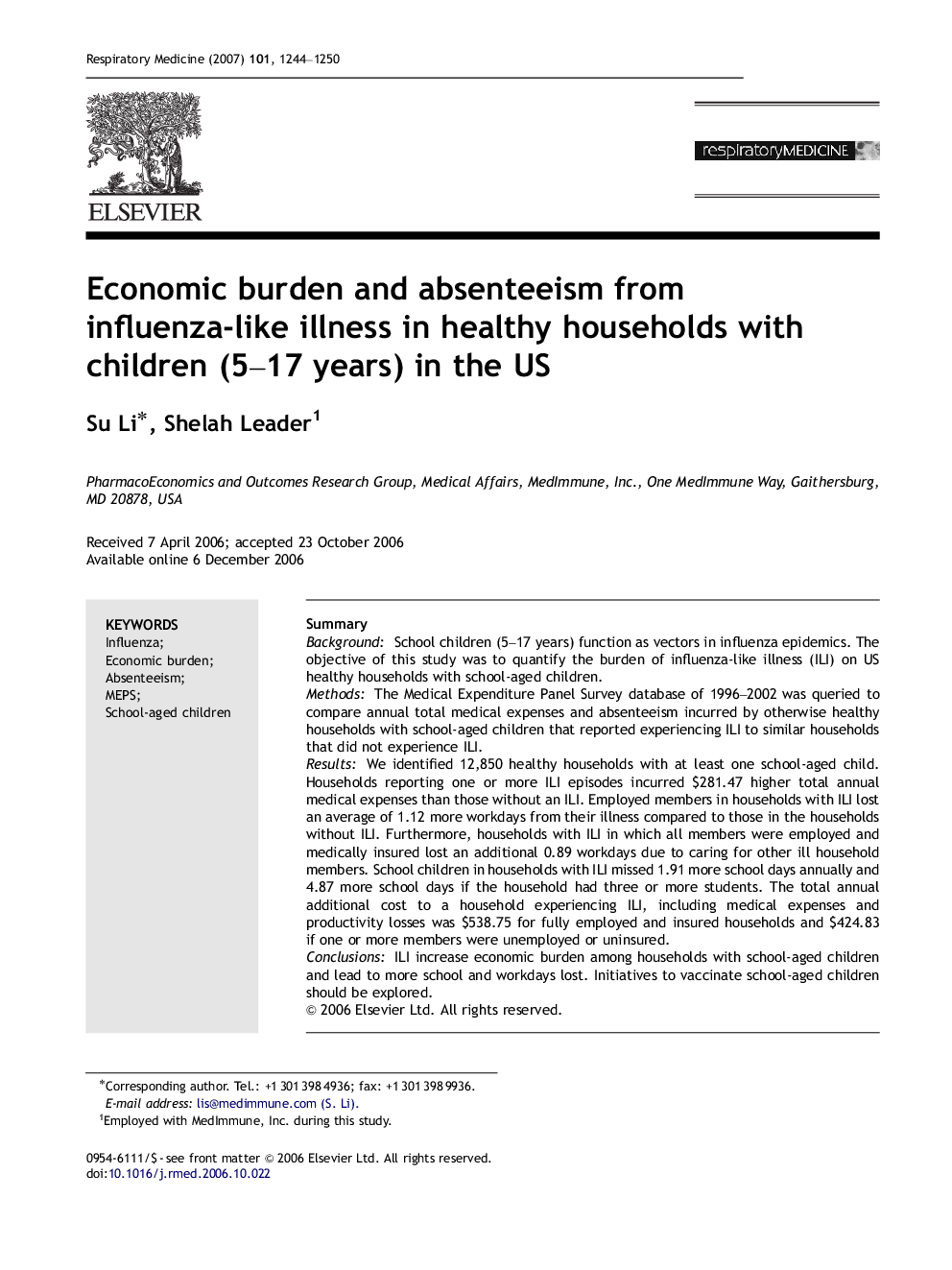| Article ID | Journal | Published Year | Pages | File Type |
|---|---|---|---|---|
| 4211667 | Respiratory Medicine | 2007 | 7 Pages |
SummaryBackgroundSchool children (5–17 years) function as vectors in influenza epidemics. The objective of this study was to quantify the burden of influenza-like illness (ILI) on US healthy households with school-aged children.MethodsThe Medical Expenditure Panel Survey database of 1996–2002 was queried to compare annual total medical expenses and absenteeism incurred by otherwise healthy households with school-aged children that reported experiencing ILI to similar households that did not experience ILI.ResultsWe identified 12,850 healthy households with at least one school-aged child. Households reporting one or more ILI episodes incurred $281.47 higher total annual medical expenses than those without an ILI. Employed members in households with ILI lost an average of 1.12 more workdays from their illness compared to those in the households without ILI. Furthermore, households with ILI in which all members were employed and medically insured lost an additional 0.89 workdays due to caring for other ill household members. School children in households with ILI missed 1.91 more school days annually and 4.87 more school days if the household had three or more students. The total annual additional cost to a household experiencing ILI, including medical expenses and productivity losses was $538.75 for fully employed and insured households and $424.83 if one or more members were unemployed or uninsured.ConclusionsILI increase economic burden among households with school-aged children and lead to more school and workdays lost. Initiatives to vaccinate school-aged children should be explored.
